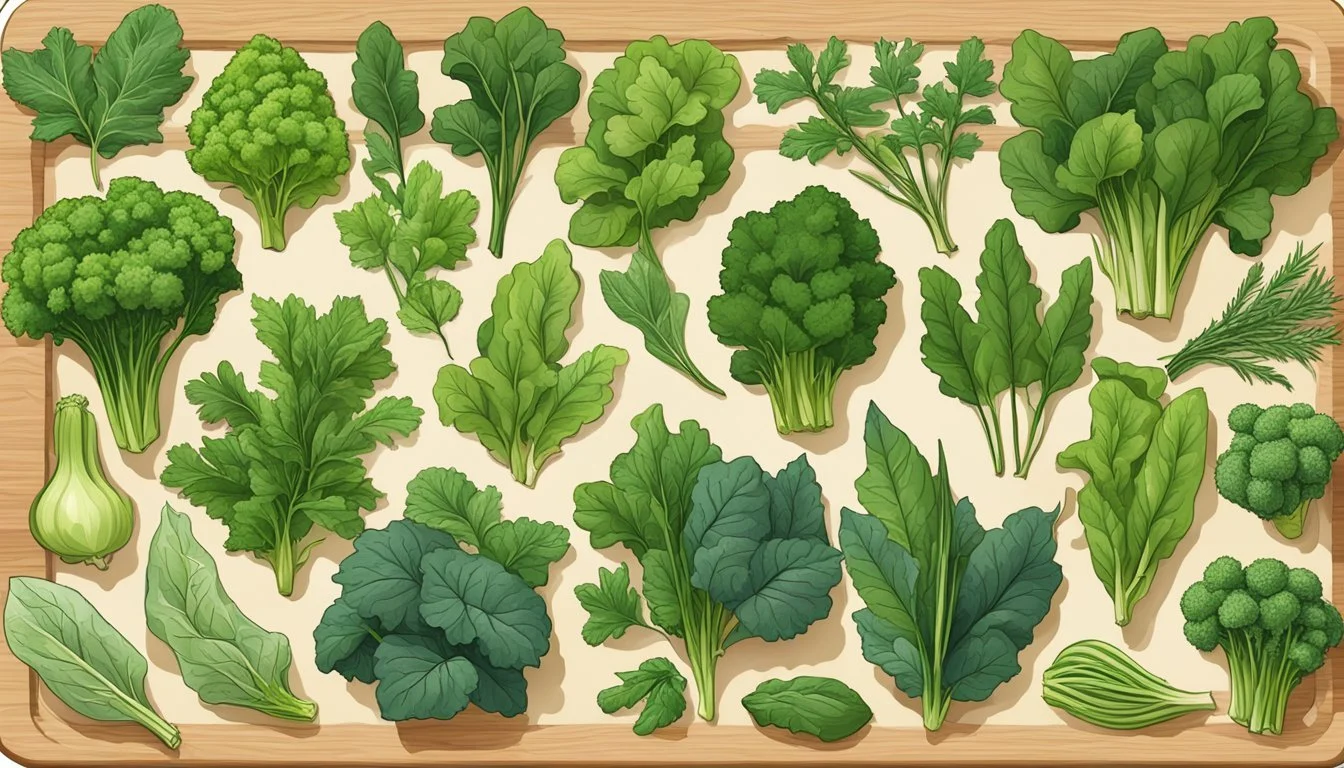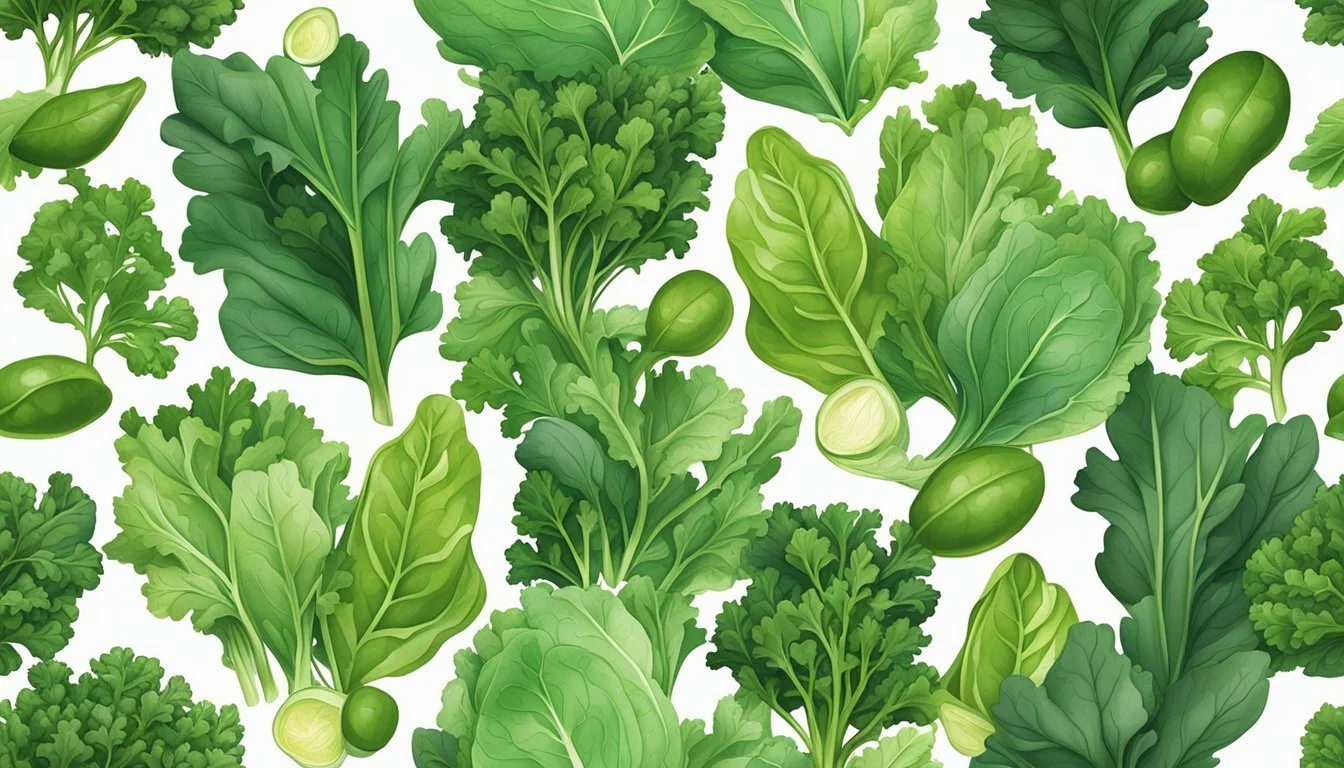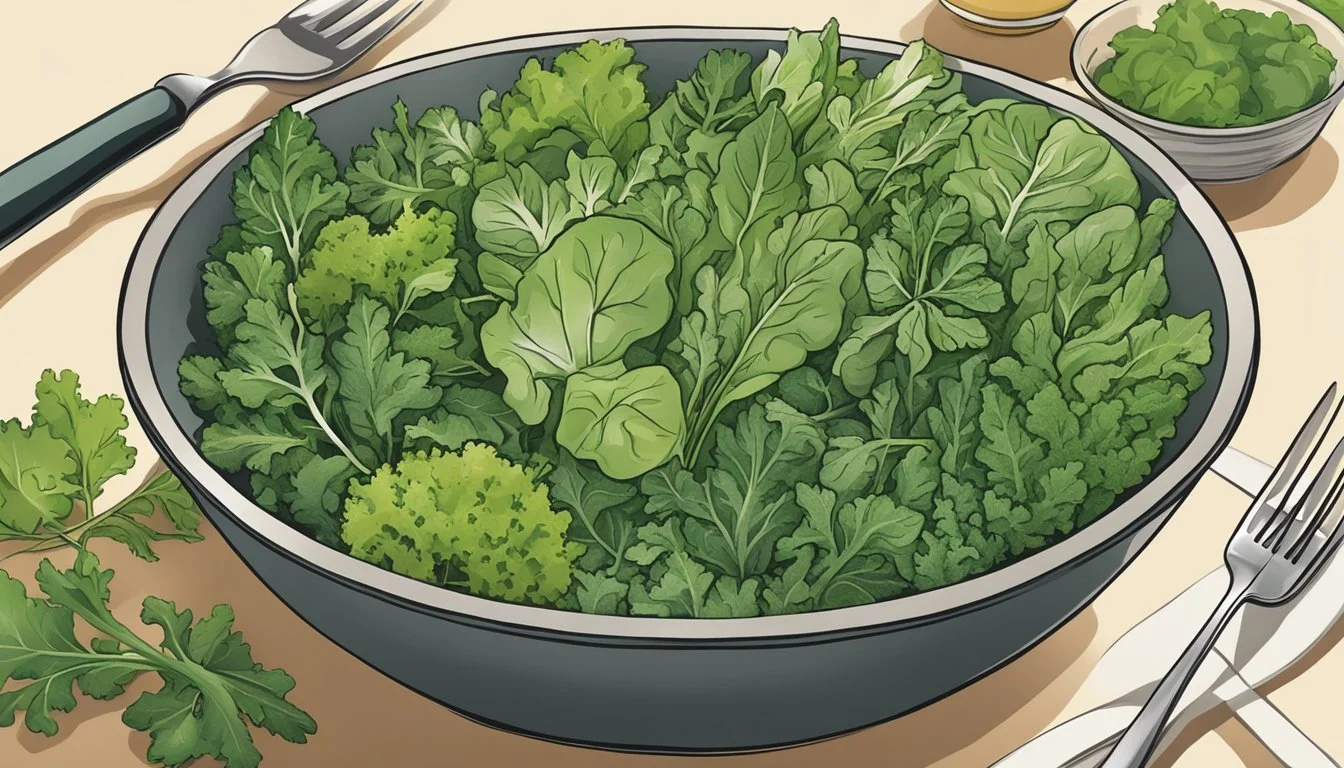Mizuna Substitutes
Best Alternatives for Cooking
For those who enjoy the peppery flavor of mizuna but can't always find it, several substitutes offer similar taste and texture. Mizuna, a staple in Japanese cuisine, is known for its tender leaves and slightly spicy kick, making it perfect for salads and other dishes. Whether it's due to seasonal availability or simply running out, knowing alternatives can keep your recipes on track.
Arugula is a popular choice as it closely mirrors mizuna's spice and texture. Other substitutes include watercress, baby spinach leaves, mustard greens, and even dandelion greens. These options are versatile and nutritious, ensuring your dishes remain flavorful and healthy.
Mizuna's versatility isn't limited to salads. It can be used in stir-fries, soups, and more, so having a range of substitutes broadens your culinary options. By exploring these alternatives, you can recreate the vibrant taste of Japanese green in your kitchen with ease.
Understanding Mizuna
Mizuna is a leafy green vegetable belonging to the Brassica rapa family. Known for its bright green, deeply serrated leaves, it has a distinct peppery flavor that adds a unique touch to salads and dishes.
Its texture is tender yet crisp, making it an excellent addition to various culinary applications.
Nutritionally, mizuna is a powerhouse. It is incredibly nutrient-dense, offering high amounts of vitamins and minerals with very few calories. A typical serving size of 42.5 grams (1 cup) contains around 14.6 calories.
Key Nutrients in Mizuna:
Vitamin K
Vitamin A (as Beta Carotene)
Vitamin C
Folate
Iron
Calcium
Mizuna also boasts a good amount of antioxidants, which are crucial for neutralizing free radicals in the body. This makes it a healthy addition for those looking to boost their nutrient intake and overall well-being.
Beyond its health benefits, mizuna's mild yet peppery taste complements a range of dishes, from raw salads to cooked meals. It can be used in stir-fries, soups, or simply as a garnish.
This leafy green is not just versatile but also heat-tolerant, making it relatively easy to grow in various climates. Its ability to thrive in different conditions contributes to its popularity among home gardeners.
In essence, mizuna is a flavorful, nutrient-packed green that offers a multitude of health benefits while being a delight in the kitchen.
Mizuna in Culinary Uses
Mizuna, also known as Kyona or Spider Mustard, is a versatile leafy green that can be used in various dishes. It’s popular for its crisp texture and mild peppery flavor, making it suitable for salads, soups, stir-fries, wraps, and garnishes.
Traditional Japanese Cooking
In traditional Japanese cuisine, mizuna is often included in hot pots such as nabemono. It is also a key ingredient in ohitashi, where it is blanched and served with a light soy sauce dressing. Another common practice is to mix mizuna with other vegetables in a simple sauté or stir-fry, enhancing the meal with its unique flavor and texture.
Mizuna in Salads
Mizuna’s peppery bite makes it an excellent addition to salads. It can be used fresh, providing a tasty alternative to arugula in mixed green salads. Pairing it with ingredients like cherry tomatoes, avocados, and nuts can create a satisfying and balanced dish. For those looking to add variety to their vegetarian or vegan meals, mizuna brings a refreshing change to typical salad greens.
Using Mizuna in Soups and Stir-Fries
Mizuna holds up well in soups and stir-fries. Its crispness adds a delightful contrast to softer soup ingredients. In stir-fries, mizuna can be quickly cooked with tofu, chicken, or beef for a nutritious meal. It pairs well with soy sauce, garlic, and ginger, making it a versatile addition to any vegetarian or meat-based stir-fry.
Mizuna as a Wrap and Sandwich Garnish
Due to its size and shape, mizuna is perfect for wraps and sandwiches. Its tender leaves can be used to wrap fillings like grilled vegetables, beans, or meats. As a garnish, mizuna adds both aesthetic appeal and a peppery crunch to sandwiches and wraps, enhancing the overall eating experience. This is a simple way to incorporate more greens into a diet without sacrificing flavor.
Popular Mizuna Substitutes
When mizuna is not available, several leafy greens can serve as excellent substitutes. Each alternative brings its unique flavor and texture to dishes, making them suitable for various culinary uses.
Arugula
Arugula, often known as rocket, is a popular mizuna substitute. It has a peppery flavor that adds a spicy kick to salads, sandwiches, and pizzas. Arugula's leafy texture is similar to mizuna, making it a suitable alternative in most recipes. It is rich in nutrients like vitamins A, C, and K, and contains small amounts of potassium and calcium. Arugula’s slightly bitter taste, combined with its sharp pepper notes, mirrors the flavor profile of mizuna well.
Mustard Greens
Mustard greens share mizuna’s spicy profile but with a more pronounced pungency. They can be eaten raw in salads or cooked in stir-fries and soups. High in vitamins A, C, and K, they also boast significant amounts of antioxidants. The leaves are heartier than mizuna, but when chopped finely, they blend seamlessly into many dishes. Their peppery bite is stronger than mizuna, making them a good choice for those who enjoy more intense flavors.
Spinach
Spinach is a versatile green that can stand in for mizuna, particularly in dishes where a less intense flavor is desired. While it lacks the spicy kick of mizuna, spinach offers a mild, slightly sweet taste and a tender texture. Rich in iron, calcium, and vitamins A and C, spinach also provides a nutritional boost. It works well in smoothies, salads, and cooked dishes, offering a softer, more neutral taste.
Kale
Kale, another nutritious green, offers a robust texture and a slightly bitter flavor, making it a hearty substitute for mizuna. Rich in vitamins A, C, and K, as well as fiber and antioxidants, kale can add both nutritional benefits and texture to dishes. It can be used in salads, soups, and stews, though it may need to be massaged or cooked to soften its fibrous leaves. Its flavor is more intense than mizuna, providing a bold addition to meals.
Watercress
Watercress has a peppery flavor similar to mizuna, making it an excellent substitute. It is often used in salads, sandwiches, and soups. Packed with nutrients, watercress is high in vitamins A, C, and K, as well as calcium and antioxidants. Its tender, small leaves are ideal for adding a fresh, peppery element to dishes. Watercress is best used raw to maintain its crunchy texture and sharp flavor.
Nutritional Comparison of Mizuna and Its Substitutes
Mizuna, arugula, and dandelion greens are popular leafy greens often interchanged in recipes. Each boasts a unique nutrient profile.
Mizuna:
Calories: 14.6 per cup (42.5 grams)
Carbohydrates: 2.7 grams
Fiber: 1.8 grams
Fat: 0 grams
Protein: 1.5 grams
Vitamin K: high
Vitamin C: high
Arugula:
Calories: slightly lower than mizuna
Carbohydrates: comparable to mizuna
Fiber: high
Fat: 0 grams
Iron: high
Calcium: high
Folate: high
Calories: low
Carbohydrates: low
Fiber: high
Fat: 0 grams
Protein: moderate
Antioxidants: high
Calcium: high
Iron: high
Macronutrients
Both mizuna and arugula are low in calories and fat. Mizuna provides slightly more carbohydrates and fiber, while arugula offers a balance that aids in weight management.
Micronutrients
Mizuna and arugula are rich in vitamin K, essential for blood clotting and bone health. Dandelion greens are notable for their high antioxidant content, which helps combat oxidative stress.
Minerals
While mizuna packs a punch with vitamins C and K, arugula edges it out with higher iron and calcium levels. Dandelion greens also provide substantial amounts of calcium and iron.
By understanding the nutritional differences, one can make an informed choice about which green to use based on dietary needs.
Growing and Harvesting Your Own Mizuna
Mizuna is a versatile leafy green that can thrive in both warm and cool conditions. Following proper cultivation techniques can lead to a bountiful harvest suitable for many culinary uses.
Ideal Conditions for Mizuna
Mizuna prefers well-drained soil and partial shade but can also grow in full sun. The optimal soil pH is between 6.0 and 7.5. Constant moisture is key to healthy growth, so regular watering is necessary. Sowing seeds every three weeks ensures a continuous supply of young leaves. During cooler weather, cover crops with a plastic tunnel or cold frame to protect them from frost. Space plants about 8 to 10 inches apart for ample growth.
Harvesting Techniques
Mizuna can be harvested at various stages, from baby greens to mature leaves. For the cut-and-come-again method, cut the leaves 2 inches above the ground to allow for regrowth. This technique extends the lifespan of the plant, providing fresh greens throughout the season. Alternatively, cut the entire plant near the base if a larger harvest is desired. Leaves are typically ready for harvesting between 20 to 40 days after germination, depending on the desired leaf size.
Potential Health Considerations
When considering substitutes for mizuna, it's important to look at potential health considerations.
Certain greens, including mizuna, contain oxalates. High intake of oxalates may contribute to the formation of kidney stones. For individuals prone to kidney stones, it's advisable to monitor and balance the consumption of oxalate-rich foods.
Mizuna is rich in antioxidants. Antioxidants help maintain healthy cells by neutralizing harmful free radicals. This process is crucial in reducing the risk of chronic diseases.
Chronic inflammation is a common issue that can lead to various health problems. Consuming greens like mizuna, which are high in vitamins and minerals, may help reduce chronic inflammation. This is beneficial for overall health, particularly in managing and preventing inflammatory conditions.
Those with specific dietary restrictions or sensitivities should be aware of these factors when substituting mizuna. It's always recommended to consult with a healthcare provider for personalized advice.
Finding Mizuna in Stores
Mizuna can be challenging to find in regular supermarkets since it is less commonly stocked.
Supermarkets: Some larger supermarkets might carry mizuna in their produce sections, especially those with a wider selection of leafy greens. Look in the organic or specialty produce areas.
Asian Grocery Stores: These stores are a good bet for finding mizuna, given its popularity in Japanese cuisine. The leafy green is often available in the vegetable section.
Health Food Stores: Health food stores sometimes stock mizuna, particularly during its peak seasons of late spring to early summer. These stores tend to offer a variety of greens, including organic options.
Farmers Markets: Another excellent place to find fresh mizuna is at local farmers markets. Many small farmers grow mizuna due to its easy cultivation and nutritional benefits.
If mizuna is not available, other greens like arugula, tatsoi, or young mustard greens can be used as substitutes.
Integrating Mizuna Into Diets and Lifestyles
Incorporating mizuna into meals is straightforward and versatile. This peppery green can easily be added to various dishes, enhancing flavor and nutrition.
Fresh mizuna leaves are perfect for salads. Combine mizuna with other greens to add a mild peppery taste. Toss with a simple vinaigrette for a refreshing side dish.
For those seeking to boost their diet with low-calorie options, mizuna is an excellent choice. It is low in calories but high in nutrients, making it a great addition to any meal without adding extra caloric load.
Mizuna can also be used in cooked dishes. Wilt the greens into pastas or risottos for a tender, flavorful touch. Its mild flavor pairs well with various ingredients, retaining its integrity without overpowering the dish.
Adding mizuna to a smoothie can offer additional health benefits. Its nutrient content supports healthy cells and overall vitality. Blend a handful of fresh mizuna leaves with fruits and a liquid base for a nutritious start to the day.
Stir-fries are another excellent avenue for integrating mizuna. Toss the greens with garlic, ginger, and soy sauce for an Asian-inspired dish.
For a heart-healthy meal, include mizuna in sandwiches or wraps. It provides a crisp texture and additional nutrients without the need for high-calorie ingredients.
Example Recipe Ideas
Salads: Mix mizuna, nuts, apples, and a light vinaigrette.
Smoothies: Blend mizuna, banana, berries, and almond milk.
Stir-fries: Sauté mizuna, tofu, broccoli, and soy sauce.
Sandwiches: Layer mizuna, turkey, cheese, and avocado on whole-grain bread.
Incorporating mizuna into regular diets offers numerous health benefits without compromising on flavor or calorie content. This green's versatility makes it a welcome addition to any lifestyle.
Engaging with Culinary Communities
Interacting with culinary communities can significantly enhance your cooking expertise, especially when it comes to using mizuna substitutes. Leveraging social media, dedicated blogs, and email series provides a wealth of information and tips.
Social Media and Online Resources
Social media platforms like Facebook, Pinterest, YouTube, and Instagram offer dynamic and engaging spaces to connect with fellow cooking enthusiasts.
Facebook groups dedicated to home chefs and specific ingredients can be valuable for finding and sharing recipes. Pinterest is a goldmine for visually-driven ideas on using mizuna in various dishes. YouTube channels by culinary experts provide instructional videos that are invaluable for both novice and experienced cooks. Instagram also serves as an excellent platform for discovering recipes and cooking hacks, thanks to its extensive hashtag system and community-focused engagement.
Culinary Blogs and Email Series
Dedicated culinary blogs such as Just One Cookbook by Nami provide reliable information and precise recipes involving mizuna. Nami offers in-depth articles that cater to both Japanese and broader culinary styles.
Blogs often feature sections like Japanese Cooking Tips, enhancing your ability to substitute mizuna effectively in traditional recipes.
Additionally, subscribing to an email series or weekly newsletter from trusted culinary websites keeps you updated with the latest recipes, seasonal tips, and exclusive cooking techniques. This continuous flow of curated content ensures that your culinary skills are ever-evolving.








